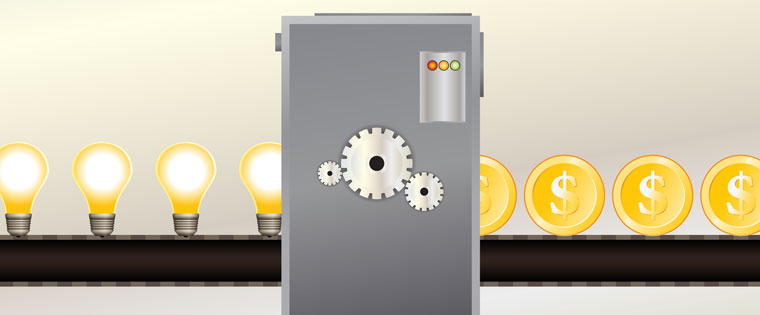Innovation can drive your company from where you are today, to where you really want to be next year.
How does it work? It has to do with your company growth. The more your business expands, the more complex your processes become.
According to The Michigan State University’s Eli Broad College of Business, “as a product moves through each of the four life cycle phases, the supply chain must also change in response. In the first phases, delivering product to meet demand is most important, so the supply chain must be highly responsive. The focus drives service and fulfilling consumer needs, rather than reducing and limiting costs.”
Descárgate gratuitamente este completo y práctico e-book, que desarrolla como gestionar cualquier flota de vehículos a través de todas sus actividades y factores clave.
“As sales increase –Michigan adds- the company shifts from a low-volume supply chain to a higher-volume supply chain. Product demand increases, the number of sales outlets increases and the supply chain becomes more complex (…) As the product matures, the emphasis shifts from fulfilling sales orders to improving supply chain efficiency to reduce costs. When sales and profits start to decline, costs must decline as well. The product must still be available to consumers, but at a lower production cost. At this time, the goal to limit distribution and increase supply chain efficiency becomes increasingly important.”
So, what’s the role that innovation plays in this story?
“Innovation –MSU explains- can greatly impact supply chain performance. Here are five aspects of the supply chain that can be innovated to meet consumers’ needs and save on costs:”
- Design for manufacture: “Design the product to make it easy to produce, thereby reducing the costs of manufacturing.”
- Design for assembly: “Design the product to minimize the number of components, easing the assembly process. Often, this results in building subsystems that are easier to put together.”
- Design for product serviceability: “Design the product for ease of assembly, disassembly and component reuse.”
- Design for Six Sigma: “Design the product to eliminate failures, improve consistency and reduce costs. For example, an appliance manufacturer decides to use one type of electric cord – instead of a dozen types – across all of its products. Standardizing parts throughout the supply chain is a good example of design for Six Sigma.”
- Design for environment: “Design the product to reduce its environmental impact throughout its lifecycle. This might be accomplished through less packaging, a more efficient supply chain or by recycling waste along the way.”
As we see, innovation in supply chain management is an important success factor in business development and even a lifesaver during rough times. “Throughout the last few years of economic upheaval, supply chains have proven to be resilient and able to withstand the extreme financial stresses. Supply chain management (SCM) professionals have remained efficient and responsive. Company leaders who are able to communicate their significant and proven achievements can not only positively affect return on investment and performance at their own companies they can also give back to the industry and to their peers by sharing their stories,” The Council of Supply Chain Management Professionals stands.
In fact, last year the United States Government underlined how essential is supply chain innovation as a key to strengthening small manufacturers in order to boost US competitiveness in global markets. The document released by The White House and the U.S. Department of Commerce says that “the Administration’s focus on reinvesting in the small manufacturers that comprise the core of America’s supply chains is just one example of how (…) the United States can rebuild what was lost and lay a foundation to sustain and deepen the resurgence underway in U.S. manufacturing.”
In other words, supply chain innovation is currently a strategic factor for the world’s first economy.
Best success cases of innovation
Last years version of the Material Handling & Logistics (MH&L) Innovation Awards –an initiative to celebrate supply chain developments in technology, processes and management- awarded ten outstanding examples of how innovation can notoriously improve company performances. Some are in testing phase, but others are already happening in real companies:
FLEET MANAGEMENT: A Robot Dispatcher to Help Truck Drivers Avoid Disruption
“The MIT Computer Science and Artificial Intelligence Laboratory (CSAIL) is developing an automated travel advisor that could ultimately function as a type of robot dispatcher that helps truck drivers avoid disruptions and choose the optimum routes to their destinations.”
“The algorithm will show the acceleration profile of the vehicle so the driver can anticipate features such as hills, and adjust the route to meet their deadlines.”
“The system has speech-recognition technology that enables it to establish a dialogue with the driver. It might ask what the driver’s goals are for a trip, and automatically plot the most time- and fuel-efficient route based on the latest traffic information and digital maps.”
“Unexpected changes can also be taken into account. For example, if the driver wants to travel to a restaurant and the place is closed, the advisor can be programmed to suggest other options.”
WAREHOUSE MANAGEMENT: Google Glass Helps Warehouse Workers See Better
“Various divisions of global logistics company DHL have been testing a method of replacing handheld scanners and paper job orders with wearable smart-glass devices outfitted with warehouse management software. The technology enables hand-free order picking, helping workers to find the fastest route to pick products. It can also read bar codes.”
“In January, the company completed a pilot project testing smart glasses and augmented reality in a warehouse in the Netherlands. In cooperation with office products manufacturer Ricoh and wearable computing solutions expert Ubimax, the technology was used to implement vision picking in warehousing operations.”
“Staff was guided through the warehouse by graphics displayed on the smart glass to speed up the picking process and reduce errors.”
“The pilot proved that augmented reality offers added value to logistics and resulted in a 25% efficiency increase during the picking process.”
SUPPLY CHAIN NETWORK OPTIMIZATION: Mercedes Reorganizes Its Supply Chain Network to Reduce Auto Costs
“Luxury automaker Mercedes-Benz is in the process of reorganizing its supply chain network to more efficiently service its expanding global footprint. The company has set a goal of reducing logistics costs per vehicle by 20% (Mercedes currently produces more than 1.75 million cars annually).”
“Part of Mercedes’ strategy involves the opening of a new consolidation center in Germany, which will provide highly specialized logistics services. Once that center becomes fully operational in 2016, it will ship several hundred cargo containers per week via inland waterways or by rail. Those containers will then be loaded onto freighters and transported to China, South Africa and the United States.”
“Previously, logistics service providers were solely responsible for managing shipments of materials from German and European suppliers to Mercedes’ plants overseas. The new arrangement will not only be shorter in distance but will also greatly reduce the company’s carbon emissions.”
“Mercedes also plans to focus on optimizing material flows into its production facilities—from material deliveries to component installation in vehicles. One plant, for instance, is piloting a project in which materials used in the final assembly area are exclusively brought to the line in prepackaged baskets by driverless transportation systems, eliminating the need for workers to get the materials themselves.”
“The company has also begun construction of a new network hub at an Adriatic seaport to ship vehicles to Asia.”




 Writen by Francisca Howard
Writen by Francisca Howard